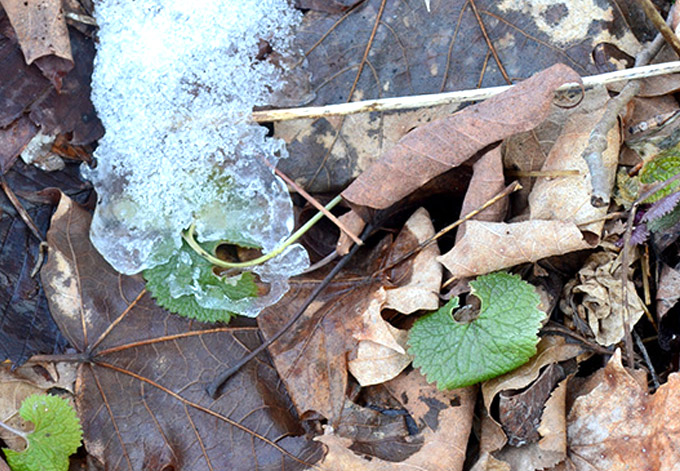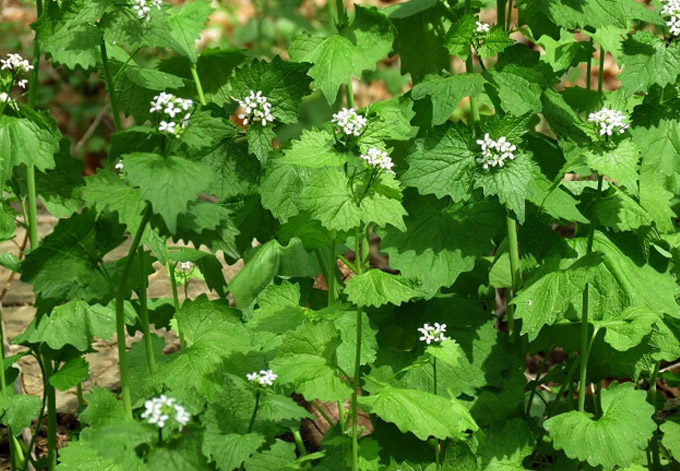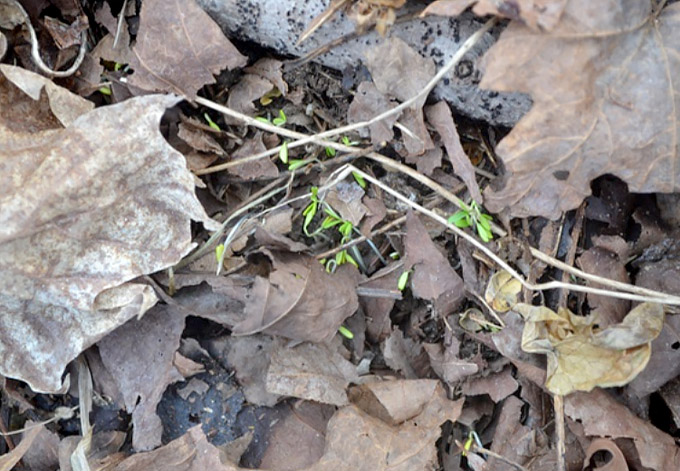Garlic Mustard

Photo: Leslie J. Mehrhoff – Second-year garlic mustard basal rosette, early spring.
Garlic Mustard (Alliaria petiolata) is a biennial herbaceous invasive plant. First documented in 1868, it was introduced for medicinal and culinary use, and has since naturalized and spread across the US.
First-year plants appear as rosettes that will produce white, four-petal flowers on stems up to 4’ tall the following year. The triangular, heart-shaped leaves have toothed edges, are aromatic when crushed, and are edible when harvested in the early spring.
Garlic mustard plants can produce up to 500 seeds per individual. The seeds are dispersed by animals, birds and wind.
Rosettes persist throughout the winter and grow rapidly in early spring, shooting up before many native herbaceous species, creating shade and outcompeting them for moisture and nutrients.
The competitive edge of early emergence is of early emergence becomes more critical as the effects of climate changes continues to impact native species’ ability to adapt quickly to seasonal changes. A dense understory of garlic mustard inhibits forest regeneration, ultimately compromising the carbon storage capabilities of maturing woody shrubs and trees.

Photo: Joan Deely – Garlic mustard, late winter

Photo: Leslie J. Mehrhoff – Second-year garlic mustard basal rosette, early spring.
Garlic mustard is believed to be allelopathic, releasing chemicals which can inhibit the growth of other plant species and may inhibit the growth of beneficial soil fungi that support the functions of tree roots.


Swallowwort
Olive
Mustard
Stiltgrass
